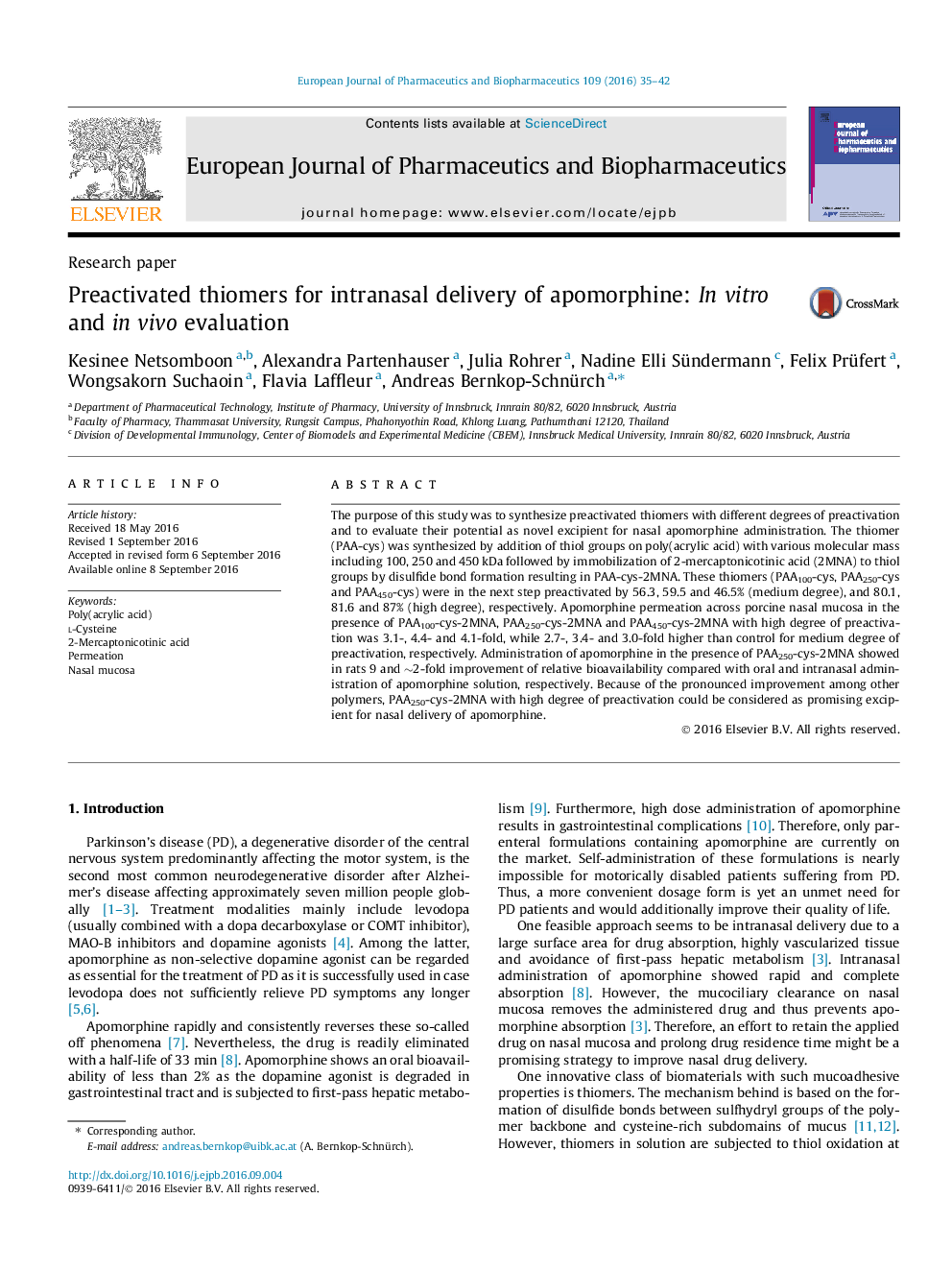| Article ID | Journal | Published Year | Pages | File Type |
|---|---|---|---|---|
| 5521655 | European Journal of Pharmaceutics and Biopharmaceutics | 2016 | 8 Pages |
The purpose of this study was to synthesize preactivated thiomers with different degrees of preactivation and to evaluate their potential as novel excipient for nasal apomorphine administration. The thiomer (PAA-cys) was synthesized by addition of thiol groups on poly(acrylic acid) with various molecular mass including 100, 250 and 450 kDa followed by immobilization of 2-mercaptonicotinic acid (2MNA) to thiol groups by disulfide bond formation resulting in PAA-cys-2MNA. These thiomers (PAA100-cys, PAA250-cys and PAA450-cys) were in the next step preactivated by 56.3, 59.5 and 46.5% (medium degree), and 80.1, 81.6 and 87% (high degree), respectively. Apomorphine permeation across porcine nasal mucosa in the presence of PAA100-cys-2MNA, PAA250-cys-2MNA and PAA450-cys-2MNA with high degree of preactivation was 3.1-, 4.4- and 4.1-fold, while 2.7-, 3.4- and 3.0-fold higher than control for medium degree of preactivation, respectively. Administration of apomorphine in the presence of PAA250-cys-2MNA showed in rats 9 and â¼2-fold improvement of relative bioavailability compared with oral and intranasal administration of apomorphine solution, respectively. Because of the pronounced improvement among other polymers, PAA250-cys-2MNA with high degree of preactivation could be considered as promising excipient for nasal delivery of apomorphine.
Graphical abstractDownload high-res image (91KB)Download full-size image
